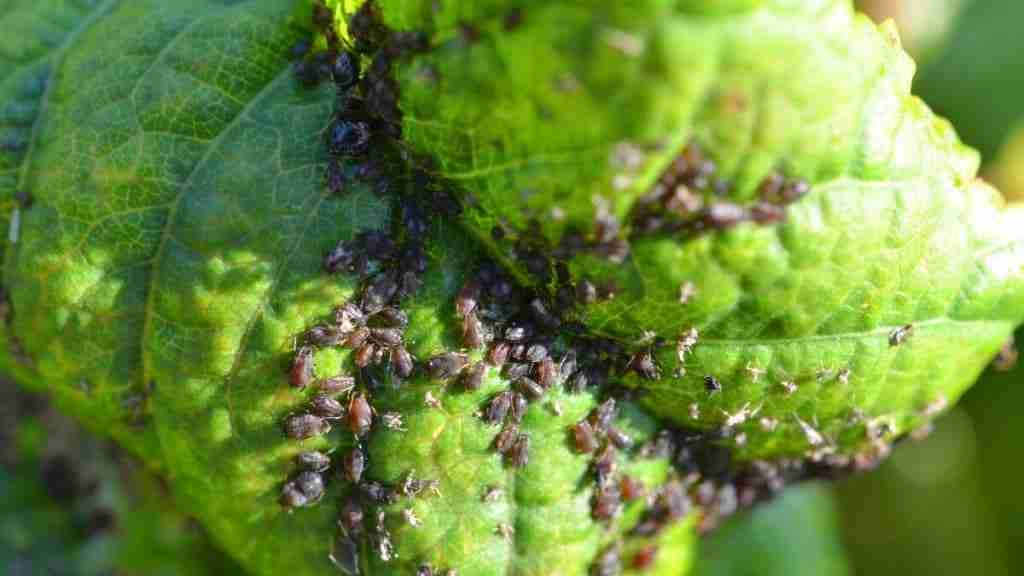
Everyone who raises leafy greens knows that aphids are severe pests and should not be taken lightly. Although they have many natural predators, aphids can hold their own and infest your plants without much effort.
They are gross and can severely damage your plants, especially newly planted or immature ones. So, what can you do? There are numerous all-natural solutions to remove aphids from kale, including:
- Encouraging natural predators
- Herbal oil sprays
- Garlic
- Clove
- Neem
- Tomato leaf
- Peppermint
- Lantana
- Plain water
- Dish Soap
If you want to rest easy knowing that your kale is safe from the clutches of an aphid swarm, use some of the techniques suggested below. They can help keep your kale protected from aphids.
And don’t let the aphids eat all of your superfoods! You might not be able to get rid of every last aphid, but you can significantly reduce their infestation.
Also see: How To Keep Ants Off Strawberry Plants: Here’s How To Do It
How To Remove Aphids From Kale
Aphids are a tricky bug to deal with, but your kale is meant to be consumed by you. While it is doubtful that you can completely eradicate all of the aphids, you can reduce their numbers and keep your kale growing unhindered. After all the tender love and care you have given your plants, there is no way you will let aphids ruin your garden!
We have compiled a list of possible solutions here to try and keep the number of aphids in your garden manageable.
It’s important to remember that natural predators are the easiest way to keep the aphids in check, so the other methods should be used in combination with ladybugs, hoverflies, lacewings, or parasitic wasps if you want long-term control.
1- Garlic and Clove Oil Spray
| Difficulty | Time Required | Expense | Annoyance |
| Easy | Medium | Low | Medium |
Garlic has sulfur, a significant problem for insects. It is antibacterial and antifungal. It’s also relatively simple to incorporate into a spray. By chopping up three or four cloves of garlic, you can add it to a couple of teaspoons of mineral oil and let the mixture sit for 24 hours. Depending on what you have available, you can also add clove oil instead of mineral oil.
Once your mixture is ready, mix it with a pint of water and sift out the garlic pieces. Test the liquid out on a single leaf and then monitor it for the rest of the day. If your mixture is too potent, the sensitive kale leaves can yellow and wither under the onslaught. If that happens, add more water to dilute it.
If your mixture is safe for the plant, then go ahead and spray away. Don’t forget to spray underneath leaves too! Aphids like to hide under the leaves and lay their eggs, so they might have snuck under the leaves even if you didn’t see them moving anymore. Or, their eggs might hatch soon, and you’ll have a second wave of infestation.
If you use this spray method in conjunction with encouraging aphid’s natural predators, you might try a different spray. Garlic isn’t toxic for aphids; it also kills ladybugs. You might figure that it doesn’t hurt to take out a few ladybugs in your quest to eliminate aphids, but the amount of aphids one ladybug eats a day is not insignificant.
2- Neem Oil Spray
| Difficulty | Time Required | Expense | Annoyance |
| Easy | Medium | Medium | Low |
Neem oil may sound unfamiliar to people who aren’t deeply entrenched in the gardening world, so let this be your introduction. The neem tree is native to India and isn’t just toxic for aphids. It also deters spider mites, whiteflies, mealybugs, and thrips. Neem oil sticks to the outside of the insect bodies and stops them from eating or laying eggs.
This oil spray is a little better than others on this list because it doesn’t affect bees, ladybugs, butterflies, spiders, or other more beneficial insects. With neem oil, you won’t have to worry about damaging the natural ecosystem in your organic garden. You will have to treat your plants regularly with neem oil to maintain the deterrent of aphids.
If you are ready and willing to go out multiple times a day to spray your plants, you might be able to get away with just a neem oil solution instead of also needing to use natural aphid predators in conjunction. However, this can be time-consuming and not a great long-term solution, so we don’t recommend it.
3- Polyculture
| Difficulty | Time Required | Expense | Annoyance |
| Medium | High | High | Medium |
Individual plants prove distasteful to aphids, so if you can plant a diverse garden, you might be able to trick aphids into ignoring the whole batch. In addition, certain plants attract the natural predators of aphids, helping balance the numbers to be more in your favor. It might not get rid of every aphid, but they won’t be as prevalent.
Polyculture, or growing multiple species of plants in a small space, isn’t as easy as it sounds. This can be difficult for people with a small garden or who are still learning to grow plants. Kale is relatively easy to grow, but some other plants that diversify the garden aren’t so simple for beginners.
If you are having trouble, consider planting super smelly plants (for aphids), like:
- Marigolds
- Fennel
- Onions
- Garlic
- Cilantro
- Catnip
- Leeks
- Dill
Some of those plants also do double duty and attract ladybugs, a natural predator of aphids and protector of your kale. We discuss natural predators more below in their section. You can also try planting crops more attractive to aphids than kale but not so appealing to humans, like nasturtiums.
You will have to move them around to prevent too many aphids from gathering in your garden or take the opportunity to crush the aphids on the so-called ‘trap plants,’ but you will have to monitor the activity.
4- Forceful Water Spray
| Difficulty | Time Required | Expense | Annoyance |
| Easy | High | None | Medium |
Using a hose to destroy the aphids might be a more cumbersome solution, but it is the least likely to damage your kale leaves. Kale is sensitive for the first few months after planting, so you might want only to use water during that period. By forcefully spraying the aphids, you can stop them immediately.
However, this can be time-consuming to keep your kale plants aphid-free. You have to monitor the plants all day and go out multiple times to spray before they get the hint and leave your garden alone. That can get old quickly, but if you are committed to using intense bursts of water, this is the only way to go.
If you have some time on your hands and are ready to go to bat for your kale, spraying water might be the best way to get aphids, and other bugs, out of your garden, but for most people, this method takes too long and too much energy to be considered when you have the other choices on this list.
Besides the time and effort, the downside to this method is that there are plenty of places for the tiny buggers to hide.
Additionally, you will have the unintended side effect of possibly overwatering your plant, leading to rotting and an ant infestation. This isn’t recommended as more than a temporary solution right before harvesting.
5- Peppermint Spray
| Difficulty | Time Required | Expense | Annoyance |
| Easy | Medium | Low | Medium |
Strong mint tea with a few droplets of dish soap is an easy and cost-effective way to spritz your plants and deter aphids. However, this can be time-consuming to keep your kale plants aphid-free. You have to monitor the plants all day and go out multiple times to spray before they get the hint and leave your garden alone.
In conjunction with natural aphid eaters like hoverflies and lacewings, an herbal spray might provide the edge you need to tip the scales in your favor and bring down the aphid numbers to a more manageable level.
6- Lantana Spray
| Difficulty | Time Required | Expense | Annoyance |
| Easy | Medium | Low | Medium |
Mixing lantana with water and a few drops of dish soap is another type of spray that can control the number of aphids on your kale. However, this can be time-consuming to keep your kale plants aphid-free. You have to monitor the plants all day and go out multiple times to spray before they get the hint and leave your garden alone.
Not to mention the fact that lantana contains certain pesticides that affect more than just aphids. It’s tempting to want your garden to be completely bug-free, but remember that bugs are a significant part of your garden’s ecosystem.
Bugs have become integrated into kale plants’ survival, so think twice before eradicating all insect life.
7- Tomato Leaf Spray
| Difficulty | Time Required | Expense | Annoyance |
| Easy | Medium | Low | Medium |
Tomatoes are naturally aphid-repellant plants because of the chemical compounds in their leaves. This method is obviously preferred by people who grow tomatoes themselves, but tomato leaves aren’t hard to procure, even if they aren’t available in your garden. To make this spray, crush some tomato leaves and put them in water to soak for 24 hours.
That is enough time for the tomato leaves to infuse the water with the toxic alkaloids that are so efficient at killing aphids. You can quickly load this water into a spray bottle and give your plants a full spritz.
Try to get them wet as much as possible for maximum protection. The alkaloids will kill the aphids present and deter most aphids from swarming in the future.
8- Dish Soap
| Difficulty | Time Required | Expense | Annoyance |
| Easy | Low | None | Medium |
Like the herbal oil sprays listed above, this method involves mixing something with water and then spraying the plants with that water. A small amount of dish soap with your water can make your spray more potent in your war against the aphids. The soap makes it harder for them to grip the leaves or to fly back and hold on again.
In addition, dish soap bubbles make it impossible for the aphids to breathe, so any caught under your bubbly onslaught will probably die.
For future aphids, they will avoid the plant for a little while because soap tastes wrong to aphids, and they won’t be tempted to nibble on your kale. However, this is a temporary solution because the soap will wash off, and they’ll be back.
Some people mix a bit of soap with their tomato leaf spray to give it a little extra kick if they are dealing with a particularly persistent swarm. Again, this will only be effective for a few hours.
The next time your kale is watered, the smell and taste will wash away, and the aphids will return with a vengeance. You will need some backup if you want to win the war.
9- Pruning Your Kale
| Difficulty | Time Required | Expense | Annoyance |
| Easy | Medium | None | Low |
While it may be advantageous for new sprouts that aphids are more likely to eat taller and older plants, it can be a pain for the gardener to monitor.
If you can find any leaves that are entirely infested and beyond the hope of saving, you should prune them and immediately move them to the compost heap. Without a living plant, the aphids will die.
10- Take Shelter Inside
| Difficulty | Time Required | Expense | Annoyance |
| Easy | High | None | Medium |
If all else fails, you can always move your kale inside. This might be more or less possible depending on the size, number, and location of your kale plants, but it is something to consider if the aphids are overwhelming and showing no signs of retreat. It’s embarrassing to admit defeat against a tiny bug, but they have the number advantage.
Kale grows surprisingly well indoors, so you won’t be hindering its growth by moving it inside. Moving a plant might be challenging, but as long as you gently gather all the roots into a roomy pot and give it the soil, water, and sunlight it needs, kale can thrive inside. Plus, you won’t need to worry about any bug damaging your plant indoors.
Kale needs about four hours of direct sunlight per day to flourish. Most kale growers like to put their plants in a window facing south.
During the summertime, it can get pretty warm right on the other side of the window, and kale does not do well in the heat, so remember to check the temperature regularly and move it away if need be.
Encourage Natural Predators
| Difficulty | Time Required | Expense | Annoyance |
| Low | High | Medium | Low |
In addition to the other solutions, the best way to bring down the number of aphids is to let nature take its course.
Aphids have potent natural predators that help limit their numbers in the wild, so why not bring the wild to your garden? The main reason that aphids are so hardy is that they can more easily withstand cold weather than their predators.
While their enemies are enjoying a long winter nap, aphids are out and about, feasting on your kale. These predators include:
- Ladybugs
- Lacewings
- Parasitic wasps
- Hoverflies
1- Ladybugs
The best solution for most people is the ladybug. They aren’t terribly expensive, and one ladybug can consume around 50 aphids daily. That might not seem like much of a dent in the thousands you have seen, but a cloud of ladybugs is just what the doctor ordered for your garden. However, you will need to make some preparations for their arrival.
Ladybugs won’t stay around to eat the aphids unless there are plants in your garden that they like. Aphids are tasty for them, but not a ladybug’s only food source. They want variety in their meals, and you need to provide it, or they will take wing and be gone on the breeze. Ladybugs need pollen to stay alive, so you need to customize your garden for them.
When people have aphid problems, ladybugs are the most common solution, and for a good reason. They are relatively inexpensive and easy to store before you release them.
The downside is how picky they are about their living space. Although they like aphids and are super effective at gobbling tons of them, ladybugs need to be wooed.
If you try releasing ladybugs in your garden in the midst of an aphid crisis and they don’t stick around long enough to put a dent in their numbers, don’t just run out and buy more.
Try planting some of the following suggestions to make your garden more attractive to ladybugs. That way, you aren’t just releasing them everywhere but your kale.
Ladybugs enjoy the following plants:
- Carrots
- Dill
- Yarrow
- Caraway
- Chives
- Fennel
- Mint
- Statice
- Cilantro
- Daisy
- Sweet Alyssum
- Marigold
- Feverfew
- Cosmos
- Dandelions
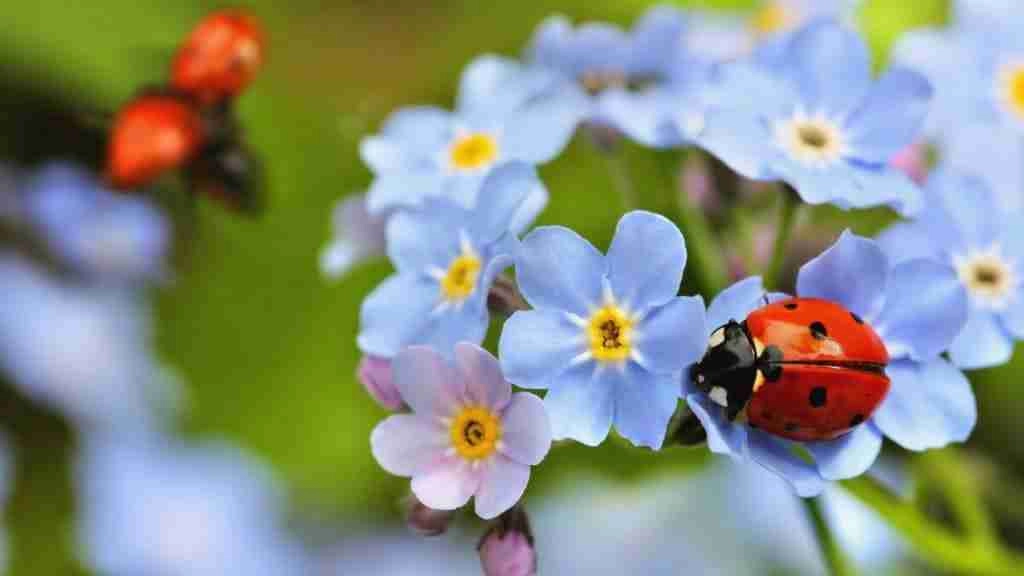
2- Lacewings
Lacewings aren’t just good for aphid control. They also are known for eating any kind of insect with a soft body, like mealybugs and whiteflies. While you may only have an aphid problem at the moment, it is always good to plan for the future. Why not bring on an insect that can keep you from having issues with other pests down the line?
When you purchase lacewings, you will have to decide what stage in their lifecycle will work best for your garden. Buying eggs is best when you are planting kale initially because it will give the eggs time to hatch before you start needing the aphid protection. The eggs are also the most affordable option and are easy to position on the kale.
The larvae lacewings are serious predators, so you should buy them if you already have a severe problem. Plus, lacewings aren’t picky, so they are great if you don’t know exactly what kind of aphid is invading your garden. Adult lacewings don’t eat aphids, so don’t make the mistake of buying them if you want to fight an infestation.
Larvae continue for two to three weeks, depending on the temperature, so you can expect them to make a large dent in your aphid issue. They perform best in a warm, humid environment.
Don’t bring lacewings out in the winter air because they will likely freeze and die, but the other three seasons should be just fine.
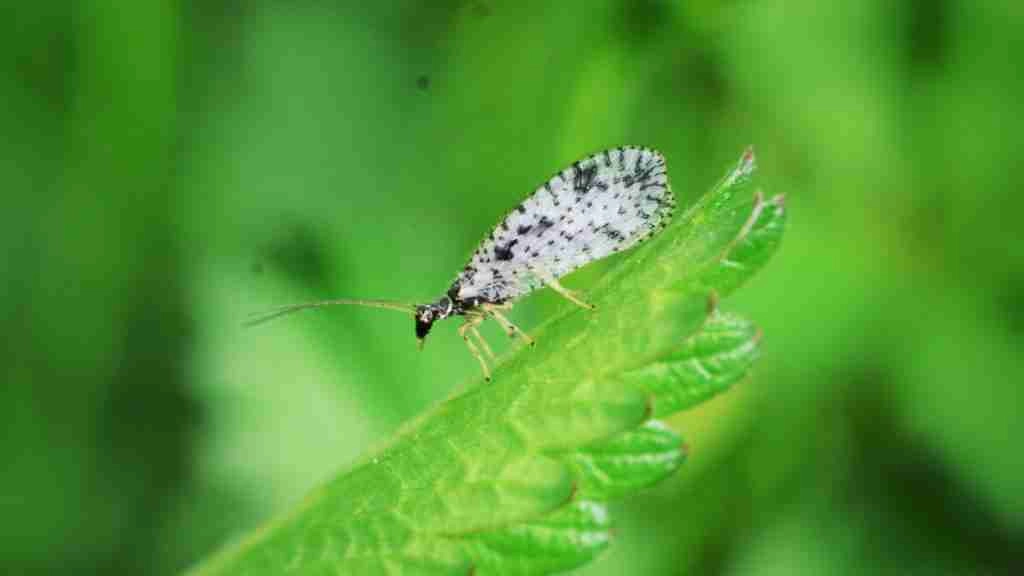
3- Parasitic Wasps
These nasty little bugs might have a bad reputation for their name and how they reproduce, but they are nothing if not virtually eliminating your plague of aphids. Parasitic wasps can detect the scent of aphids because of the honeydew that they secrete. They find their prey and lay their eggs by injecting them inside the aphid’s soft shell.
When the eggs hatch, the baby wasps have prey ready and waiting to be eaten from the inside out. You don’t need a ton of wasps to deter the aphids either. When some of the non-injected aphids notice the wasps, they alert the rest of the swarm to the presence of wasps, and they will leave to escape the horrible fate in store.
Oddly, when the aphids leave the plant, most of them fall and die immediately. You will know that your plan worked if you see a large cloud of aphids dead on the ground around your infected plant. Wasps are also very efficient at reproducing and live, on average, for two to three weeks, similar to the lacewings.
Within ten to fifteen days after you release them into your garden, you should notice that the number of aphids has been drastically reduced.
Unlike ladybugs, parasitic wasps are less likely to fly away upon release without first dealing with your aphid problem. Parasitic wasps often stick around their area of release for their entire lives.
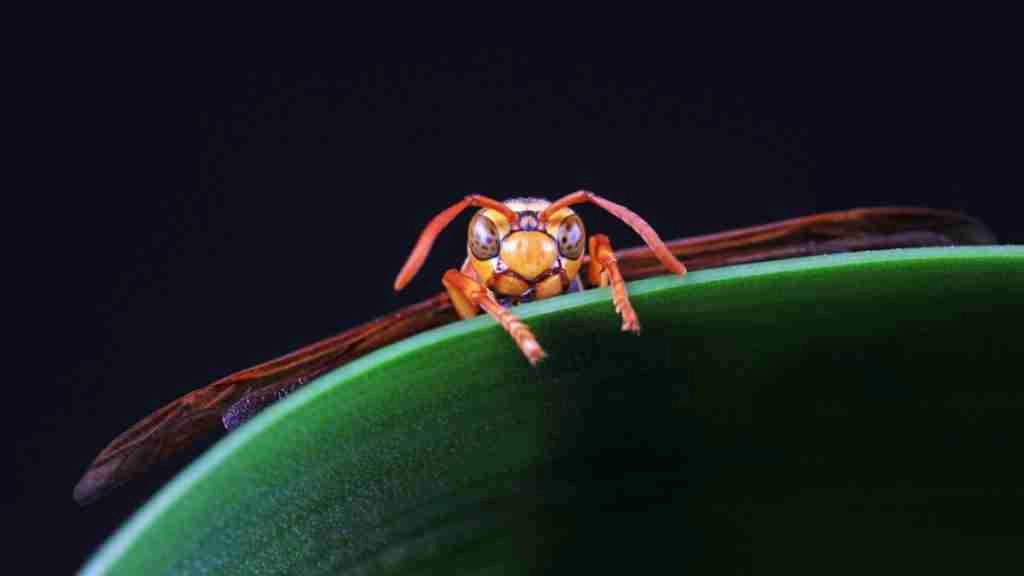
4- Hoverflies
Also known as drone flies, the hoverfly is your ally in the war against aphids. They can be challenging for amateurs to identify because they have evolved to look like bees and wasps to ward off their own predators, but don’t be fooled. They won’t bite or sting you. In fact, they won’t hurt you at all. They just want to eat your aphids.
Plus, they pollinate your flowers, so hoverflies are crucial in many gardens. Again, the larvae are the ones who eat the aphids, not the adults, so don’t make the mistake of buying adult hoverflies to solve an ongoing aphid problem. Every hoverfly larva eats around 400 aphids before turning into an adult.
Another advantage of the hoverfly as an aphid control is that they are sturdier than other natural predators. They can handle colder temperatures too, which makes them ideal for certain types of aphids, which do well in the autumn chill. If you just want prevention, you can purchase their eggs.
Then, simply place the eggs onto the underside of leaves that you are worried about.
If you have encountered problems with aphids in the past, it might be beneficial to buy hoverfly eggs when you are about to plant some new kale and put the eggs on them, just to make sure no aphids dare to infest your precious plants.
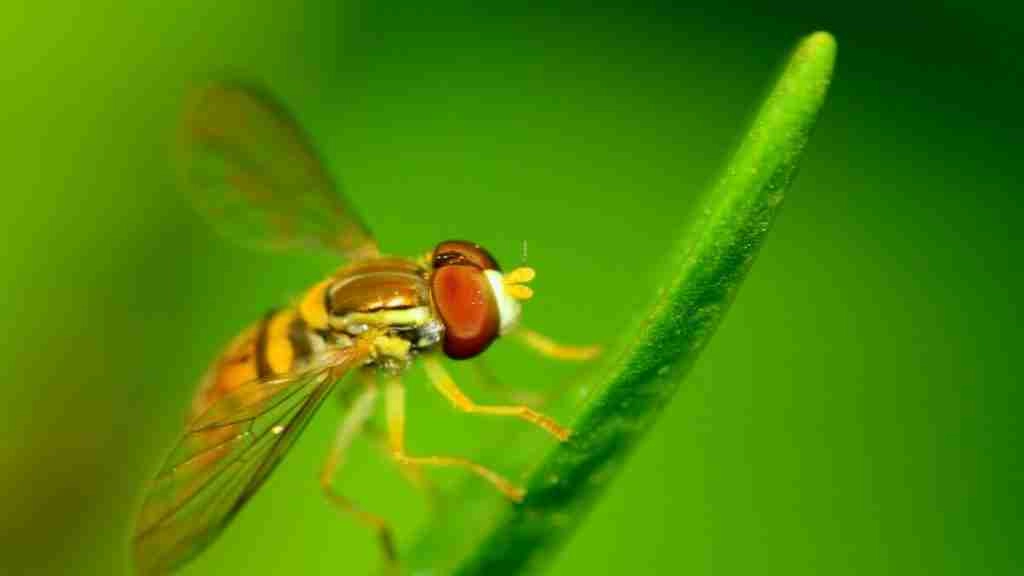
Washing Kale Covered In Aphids
One of the reasons why aphids are so annoying is the way they cling to leaves. If you harvested some kale, not knowing about the aphid problem, you can’t just give them a quick rinse to solve the problem. You will have to physically swirl the leaves in cold water for a while to dislodge them from your kale. To facilitate the washing, you should add a pinch of salt or drop of soap to the water.
Salt and soap lower the amount of surface tension in the water and make it more difficult for the aphid to keep holding on. You will need to put the kale in a bowl with cold water, salt, or soap, and then let it sit for a few minutes before swishing them around.
Once you drain the water, that should be enough to clean your kale thoroughly. Just remember to rinse the soap afterward.
Eating Aphids
Yes, it sounds gross, but just hang on for a second. Instead of immediately wincing and skipping this section, give it a moment. This isn’t meant to be disgusting. Aphids are not harmful to humans. You probably don’t want to eat them, and they are definitely not appetizing, but as stated above, aphids have a firm grip and aren’t easily removed.
If you don’t manage to curb the aphid infestation and harvest your kale, you will likely wash it before consumption, and that should get rid of most of the aphids, provided that you follow the advice given above.
However, it might not remove every single last tiny aphid. So, for anyone worried: don’t be. Aphids can’t hurt you. They just look icky.
In Conclusion
There is no need to be down if you have noticed aphids trying to rain on your kale parade. You also don’t need to feel like you have to turn to harsh pesticides either.
They can cause some damage to sensitive plants. Using any of the suggestions above, you should be able to make your garden free of aphids in no time.
Sources:


